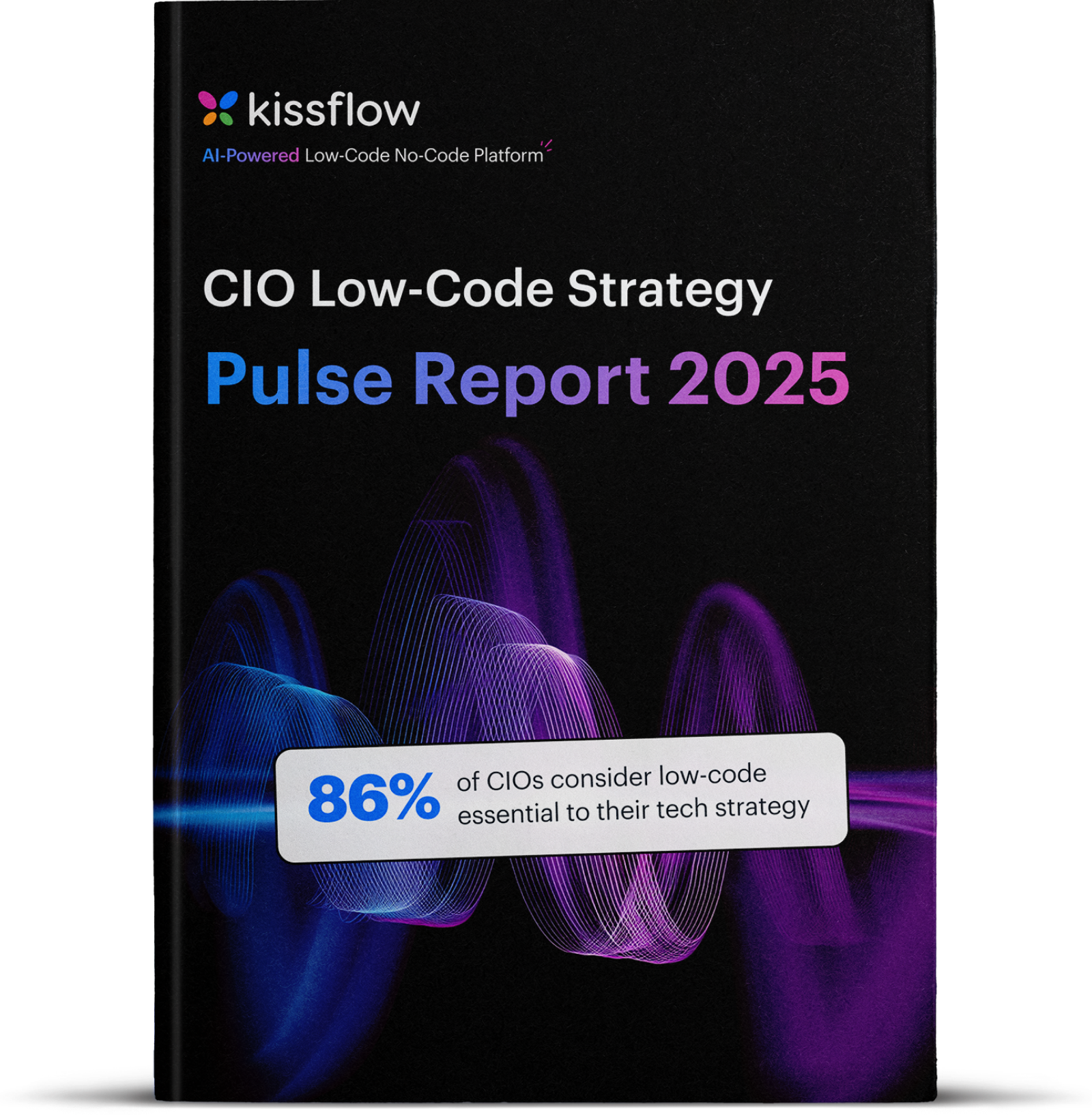
The Future of Fuel Retail: How Automation is Shaping Distribution Networks in Oil and Gas
Your phone rings at 6:47 AM. It's Jake from Premium Gas & Go, and he's furious. His fuel delivery was supposed to arrive yesterday, but nobody can tell him where his truck is. Meanwhile, three other retailers are emailing about missing contract renewals, and your operations manager just discovered that last week's onboarding paperwork for two new partners has completely disappeared.
Welcome to Monday morning in fuel distribution.
While you're putting out these fires, your biggest competitor just onboarded five new retailers in the time it took you to find Jake's missing delivery. They're not smarter than you. They're not spending more money than you. They stopped trying to run a modern distribution network with tools in 1995.
Here's the thing: fuel retail automation isn't some far-off fantasy anymore. Companies are already using it to cut onboarding time from weeks to days, eliminate those 6 AM panic calls, and sleep through the night knowing their distribution network runs itself. We will show you exactly how they're doing it, what it means for your business, and why waiting another year might be your most expensive decision.
Why fuel distribution networks need digital transformation
Let's be honest about what's happening in most fuel distribution operations right now. Your team probably spends hours each week chasing down basic information that should be at their fingertips.
Take retailer onboarding, for example. When a new gas station wants to partner with your company, how long does it really take? Most companies we talk to say anywhere from 4-8 weeks. That's not because the paperwork is complicated. It's because forms get lost, approvals sit in someone's inbox, and nobody knows where things stand in the process.
Here's a fictional scenario that might hit close to home: Sarah runs operations for a mid-sized fuel distributor. Last week, she got a call from an angry retailer who'd been waiting six weeks for contract approval. The legal team thought finance was reviewing it. Finance thought it was back with legal. Meanwhile, the retailer considered switching to a competitor who promised faster onboarding.
Sound familiar? That's the reality when your distribution network runs on manual processes.
The communication breakdowns are just the tip of the iceberg. Without centralized data, your managers can't see bottlenecks until they become major problems. Compliance tracking becomes a nightmare when contract details are scattered across different systems. And don't get started on trying to pull reports for strategic planning.
Modernize Refining and Distribution Operations
Digitizing retailer and reseller onboarding with no-code apps
Here's where fuel retail automation starts to make sense. Instead of paper forms and email chains, imagine digital applications that capture everything you need upfront.
A low-code platform for fuel logistics can create intake forms that collect business details, tax information, and legal documents in one place. No more chasing down missing paperwork or wondering if someone filled out section three correctly.
But the real magic happens with automated workflows. Once a retailer submits their application, the system can route it to the right people in order. Drawing from the structure of health and safety automation in oil and gas, legal reviews compliance documents while finance checks credit history. Operations can start planning territory assignments. Everyone knows what they need to do and when.
Let's imagine how this works: Mike's Convenience Stores wants to partner with your fuel distribution company. Instead of printing forms and faxing documents, Mike fills out a digital application from his laptop. The system automatically sends notifications to your legal, finance, and operations teams. Each department can review its part simultaneously rather than waiting in line.
Within 48 hours, Mike gets an email saying his application is approved and his first delivery is scheduled. Your team saved three weeks of back-and-forth, and Mike's already telling other store owners about how smooth your onboarding process is.
That's the power of fuel station process digitization. You're not just saving time - you're creating a better first impression that sets the tone for the entire partnership.
Managing contracts and renewals in a centralized system
Contract management might be the most overlooked part of fuel distribution, but it's also where automation can have the biggest impact.
Think about how many contracts your company manages. Retail partnerships, supplier agreements, delivery contracts, service agreements. How do you track renewal dates? How quickly can you identify which contracts need updating when compliance requirements change?
Most companies we work with keep contract details in a combination of file cabinets, shared drives, and someone's really well-organized email folders. That works until the really organized person goes on vacation.
Automated fuel delivery scheduling depends on having accurate, up-to-date contract information. When you digitize contract templates and lifecycle management, renewal notifications happen automatically. Compliance checks get triggered based on actual dates rather than someone remembering to check their calendar.
Here's another fictional example: Your company has 200 retail partnerships, and 30 contracts are up for renewal this quarter. Instead of your operations manager manually tracking expiration dates, the system sends automatic reminders 90 days, 60 days, and 30 days before each contract expires. Legal gets time to review terms, finance can negotiate pricing updates, and operations can plan for any territory changes.
The result? Zero surprise expirations and stronger partner relationships because you're proactive instead of reactive.
Enabling self-service issue reporting and order placement
Your retail partners don't want to call your office every time they need something. They want to place orders, report issues, and track deliveries on their own schedule.
Self-service portals control retailers while giving your team better visibility into what's happening across the network. Instead of phone tag and missed voicemails, partners can submit requests through digital forms that automatically route to the right department.
Workflow automation for fuel retailers means order placement becomes as easy as online shopping. Retailers can see available delivery windows, track order status, and get notifications when their fuel truck is on the way.
Let's imagine this scenario: It's 7 PM on a Friday, and one of your retail partners realizes they'll run low on premium unleaded by Monday morning. Instead of leaving a voicemail that won't get checked until Monday, they log into their partner portal and place an emergency order. The system automatically flags it as urgent, notifies the dispatch team, and confirms a Saturday delivery slot.
Your partner gets the fuel they need. Your team handles the situation proactively instead of dealing with an angry call on Monday morning. Everyone wins.
The same approach works for maintenance requests, billing questions, and contract inquiries. When partners can get answers immediately, they're less likely to explore other distribution options.
Enhance your fuel retail operations with Kissflow's Inventory Management App for Energy & Oil, designed to provide real-time visibility, streamline procurement, and optimize stock levels across multiple locations.
Real-time dashboards for distributor management teams
Here's something that might sound too good to be true: What if your management team could see the entire distribution network's performance in real-time?
No more asking your operations team to pull reports. No more wondering if that new retailer from last month is actually ordering fuel yet. No more surprise bottlenecks that could have been solved weeks ago.
Real-time dashboards show onboarding status for new partners, contract renewal timelines, open support tickets, and delivery performance across your entire network. Managers can spot trends, identify problems early, and make data-driven decisions about resource allocation.
Picture this fictional scenario: Your regional manager notices that order fulfillment times are running longer than usual in the northeast territory. Instead of waiting for complaints, she can drill down and see that two delivery trucks are in maintenance and the backup driver is handling three routes instead of two. She can immediately approve overtime for additional drivers or reallocate resources from a less busy territory.
That's the difference between reactive and proactive management. When you can see problems developing, you can solve them before they impact your retail partners.
IT-managed platform with business flexibility
Now, let's talk about the elephant in the room: Who's actually going to build and maintain all this automation?
Your IT team is already stretched thin. The last thing they need is another complex system to manage. But your operations team can't keep working with spreadsheets and email chains.
The solution is a low-code platform that gives business teams the flexibility to customize workflows without writing code, while keeping IT in control of security, integration, and governance.
Here's how it works in practice: Your operations manager can modify onboarding forms or add new approval steps without submitting a development request. But IT still controls user access, data security, and system integrations with your existing logistics platforms.
This approach eliminates shadow IT risks while delivering the automation your business teams actually need. Instead of building custom applications from scratch, you're configuring pre-built workflows that integrate with your existing enterprise systems.
Kissflow specializes in exactly this balance. Business teams get the flexibility to adapt processes as regulations or business requirements change. IT teams maintain control over the platform architecture, security protocols, and system integrations that keep everything running smoothly.
Metrics- Automation’s role in fuel retail
Area |
Automation Impact |
Example/Stat |
|
Operational Efficiency |
Eliminates manual tasks, reduces errors/costs |
20–30 percent of supply chain costs are lost to inefficiency |
|
Customer Experience |
Automated billing, loyalty, and transparency |
RFID, instant SMS, omnichannel engagement |
|
Data & Analytics |
Real-time tracking, predictive forecasting |
98 percent faster discount processing |
|
Mobility Integration |
Supports MaaS, EV charging, and digital platforms |
Shared mobility market to reach $675B by 2030 |
|
Market Size |
Rapid retail automation growth |
$24.12B (2023), 9.3 percent CAGR to 2030 |
Streamline Pipeline and Transportation Management
The road ahead for fuel retail automation in oil and gas
The fuel industry is changing faster than most people realize. Electric vehicle charging networks are expanding rapidly, but traditional fuel distribution isn't going anywhere soon. The companies that thrive will be the ones that can adapt quickly to new partnerships, regulatory changes, and market demands.
Fuel logistics automation tools aren't just about saving time on paperwork. They’re about creating distribution networks that can scale efficiently, respond quickly to market changes, leverage fuel pricing automation for real-time accuracy, and deliver consistent experiences for retail partners.
The technology exists today. Low-code platforms can digitize your workflows without requiring massive IT investments or long development cycles. The question isn't whether automation will transform fuel distribution. The question is whether your company will lead that transformation or scramble to catch up.
Starting small makes sense. Pick one process that's causing the most headaches—maybe retailer onboarding or contract renewals—and digitize that first. Learn what works, train your team on the new approach, and gradually expand to other areas of your distribution network.
Your retail partners are already asking for better digital experiences, your operations team is already overwhelmed with manual processes, and your management team is already making decisions based on incomplete information.
Fuel retail automation can solve all three problems simultaneously. The only question is when you're ready to start.
Looking to digitize your retail fuel operations end-to-end? The Kissflow platform empowers oil and gas companies with low-code tools to automate workflows, manage data, and drive real-time decision-making — all in one place.
Ready to see how Kissflow can transform your fuel distribution network?
Related Topics:
Related Articles











